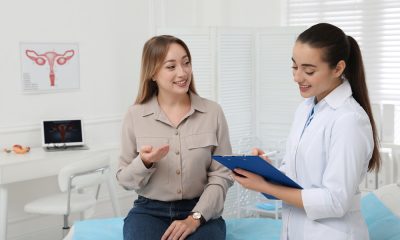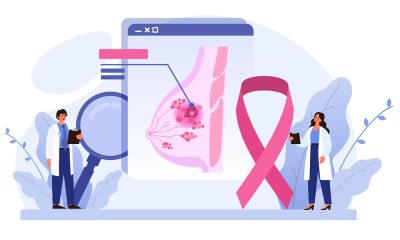Insight
Comment: Socio-economic challenges facing the femtech industry
By Melissa Wallace, co-founder of the Fierce Foundry

In an industry projected to hit US$50B as soon as next year, femtech founders—of whom 80% are women—receive only 1.9% of global VC funding. This funding limitation hinders the development of products, services, and technologies that could improve women’s lives, provide more affordable and better options, and challenge taboos surrounding women’s health.
Funding for femtech startups is challenging because venture capital predominantly resides in a male-dominated ecosystem. The lack of female representation leads to an undervaluation of women’s health issues, as these don’t directly relate to male investors.
People tend to invest in individuals who resemble them and products that align with their experiences. This simple fact means that before we can focus on building femtech, we must address the capital discrepancies—female founders have received less than 3% of VC funding since 1994.
Take Nurx for example, a telemedicine platform offering services like birth control, STI testing, and PrEP. It faced significant hurdles in securing venture capital, largely due to gender biases and the undervaluation of women’s health solutions. Initially, the company struggled to attract investors, as male-dominated VC firms often viewed women’s health as a niche market. Moreover, the politically charged nature of reproductive healthcare services made many investors hesitant.
This lack of funding delayed Nurx’s expansion into new markets and its ability to offer a wider range of services. While Nurx eventually raised significant funds, its early struggles highlight how venture capital biases can impede the growth of femtech companies, limiting their potential to address critical healthcare gaps for women.
Even more concerning than market delays due to funding issues is the lack of affordability and access for consumers. Many excellent products remain out of reach for the women who need them most. A 2022 survey by the Kaiser Family Foundation (KFF) found that nearly 30% of women reported skipping or delaying medical care due to cost, compared to about 22% of men.
The gap widens among low-income women, with over 50% reporting difficulty affording healthcare. Lack of insurance coverage for certain products, such as fertility treatments or menstrual health products, exacerbates these socio-economic inequalities, preventing marginalized women from benefiting from technological advancements.
The taboos surrounding women’s health intensify these issues. When communities regard topics like menstruation, menopause, or sexual health as taboo, it becomes harder for femtech companies to gain widespread acceptance.
We saw this clearly with Clue, the menstrual tracking app, as it attempted to expand into the Middle East and Asia. Spreading the word organically proved nearly impossible. Even when Clue was available, many women in conservative markets hesitated to download and use the app, fearing judgment from family or society. In these regions, many women avoid digital health solutions related to their bodies due to fears of social stigma or backlash.
Regulatory hurdles, both domestically and globally, further complicate matters. Compared to other sectors, femtech faces greater challenges, including longer approval times. A 2020 study by Rock Health found that femtech companies, particularly those developing medical devices for reproductive health or diagnostics, take 20-30% longer to receive regulatory approval from agencies like the FDA, compared to general health tech products. The lack of research exacerbates this issue.
Only about 30% of clinical trials for new medical devices include women as test subjects, complicating the approval process for femtech products. Companies developing women’s health solutions often need to invest in additional research and trials, increasing costs and prolonging time to market compared to companies targeting broader health issues.
Fierce Foundry is joining the growing number of organisations and initiatives by not only raising awareness about the socio-economic challenges of femtech but also creating a more favorable environment for femtech innovations.
We do this by advocating for policy reforms, raising awareness about women’s health needs, and supporting startups facing regulatory hurdles. In this election year, it’s crucial we prioritize candidates based on their position on femtech. Using non-partisan sites like Vote411, we can research candidates’ stances on healthcare, particularly women’s health issues such as reproductive rights, maternal health, and access to healthcare innovations. femtech thrives in environments where women’s health is prioritized and policies support access to technology-driven solutions. And let’s not forget – for every $1 invested in women’s health we can expect $3 in projected economic growth.
Melissa Wallace is co-founder of the Fierce Foundry, a venture studio with a mission to build female-founded startups from idea to exit.
Insight
The rise of preventive gynaecology: What women need to know

Co-written By Dr Claire Gillvray and Tarang Majmudar, Welbeck Cambridge (2026)
Gynaecological cancers, cervical, ovarian, uterine, vaginal, and vulvar, pose a significant health risk across all age groups.
While treatment has advanced in recent years, early detection remains the single most crucial factor in improving survival, reducing the need for invasive treatments, and preserving quality of life.
Why Early Detection Matters
When gynaecological cancers are detected early, the five-year survival rate exceeds 90 per cent.
In contrast, late-stage diagnosis can reduce survival chances by more than half. Early detection truly can mean the difference between life and death.
In England, the introduction of cervical screening in 1998 and HPV vaccination in 2008 has drastically reduced the incidence and mortality associated with cervical cancer.
For endometrial cancer, postmenopausal bleeding is a red flag symptom, prompting timely medical intervention and generally resulting in early diagnosis.
Yet, ovarian and vulval cancers often go unnoticed.
Ovarian cancer’s vague symptoms such as bloating, abdominal discomfort, and appetite changes, are frequently mistaken for benign conditions.
Vulval cancer symptoms like itching or soreness are often overlooked, especially post-menopause.
To improve early detection, a threefold strategy is essential:
- Screening
- Symptom recognition
- Lifestyle modification
1. Screening
Cervical cancer is one of the few gynaecological cancers that is both preventable and detectable through routine screening.
Caused primarily by the human papillomavirus (HPV), cervical cancer rates have dropped significantly due to HPV vaccination and cervical screening programmes.
In 2023, NHS England outlined its goal to eliminate cervical cancer by 2040.
Despite high HPV vaccination coverage (approximately 80 per cent), screening uptake has declined, particularly among younger women, where participation has dropped to 70 per cent.
The upcoming introduction of self-sampling for HPV aims to address this gap and improve participation.
However, no effective population-wide screening methods currently exist for ovarian, uterine, vaginal, or vulvar cancers.
This reality reinforces the importance of self-awareness, recognising symptoms, and attending regular gynaecological check-ups.

Dr Claire Gillvray
2. Recognising Warning Symptoms
Awareness of key symptoms is vital for early diagnosis:
- Cervical cancer: abnormal vaginal bleeding, post-coital bleeding, unusual discharge
- Ovarian cancer: persistent bloating, pelvic discomfort, urinary urgency, loss of appetite, weight loss
- Uterine cancer: postmenopausal bleeding, irregular or heavy periods
- Vaginal cancer: unusual bleeding or discharge
- Vulvar cancer: itching, pain, lumps, or ulceration
Although many of these symptoms can have benign causes, persistence or change from the norm should always prompt medical review.
Historically, women’s gynaecological symptoms have often been minimised or dismissed.
This has led to diagnostic delays for conditions like endometriosis, which still takes nearly 9 years on average to diagnose.
Young women are particularly vulnerable, with symptoms too often attributed to hormonal changes or stress.
Rather than placing blame, we must push for better education, research funding, and structural support to help clinicians, especially in primary care, identify early warning signs across diverse age groups and health backgrounds.
3. Lifestyle and Risk Reduction
Healthy habits can reduce the risk of several gynaecological conditions:
- Maintain a healthy weight
- Eat a balanced, nutrient-rich diet
- Avoid tobacco and limit alcohol
- Get vaccinated for HPV and practice safe sex
- Attend regular health checks
- Manage conditions like diabetes and hypertension
- Seek genetic counselling if there’s a family history of breast, bowel, or gynaecological cancers
Prevention isn’t only about medical care, it’s also about empowering people with the knowledge and tools to take charge of their health.
The Role of Men and Partners in Gynaecological Health
Preventative gynaecology isn’t a “women-only” issue. Men and partners play an essential role in recognising early warning signs, supporting open health conversations, and advocating for equitable care.
Awareness campaigns must include all genders, so that everyone can support informed decisions, challenge stigma, and help normalise seeking help early.
The Rise of FemTech
Preventative gynaecology is being transformed by FemTech with technologies including:
- Menstrual tracking apps
- Wearable hormone monitors
- At-home diagnostics
- AI-powered symptom tools
These innovations give people more insight into their own health and more confidence when seeking care.
Yet, technology alone isn’t enough. It must be paired with systemic changes in how symptoms are recognised and responded to.
Chronic pain, abnormal bleeding, and fatigue are too often normalised, leading to prolonged suffering and delayed diagnoses.
Empowering Through Self-Advocacy

Tarang Majmudar
A central tenet of preventative gynaecology is self-advocacy. This involves:
- Know your normal—cycles, mood, energy, libido
- Use tech to track symptoms and patterns
- Push for answers when something feels “off”
- Recognise that stress, sleep, and environment all play a role in health
Empowerment also means expecting and demanding respectful, informed care. It’s about being heard, not dismissed.
Prevention in Action: Real Progress
We’re already seeing the benefits of preventative measures:
- The HPV vaccine is reducing cervical cancer rates significantly.
- Early hormone therapy during perimenopause can protect bone, brain, and heart health.
- Growing awareness of reproductive conditions is shortening the diagnostic journey for many.
When supported by data and technology, people can have more meaningful conversations with healthcare providers and make informed choices about their bodies and care.
Looking Forward
For individuals:
Use digital tools to track trends and flag changes. Treat this data as a conversation starter, not a diagnosis.
For clinicians:
Engage with new technologies. Ask proactively about menstrual, hormonal, and sexual health.
For innovators:
Design inclusive, accessible tools for all bodies, all ages, all ethnicities.
For policymakers and researchers:
Support funding for research that focuses on earlier detection, better diagnostics, and equitable access to care.
The future of gynaecological care is not just about reacting to disease, it’s about preventing it, detecting it early, and empowering everyone to take control of their health.
Preventative gynaecology is more than a trend, it’s a necessity.
With education, accessible tools, cultural change, and collaborative action, we can make early detection the norm, not the exception.
News
15k breast cancer patients a year could benefit from genome sequencing

Whole genome sequencing could identify unique genetic features to guide treatment for more than 15,000 breast cancer patients each year in the UK, new research suggests.
The technique, which analyses DNA from both patient and tumour to identify genetic changes, helps reveal what drives each cancer and highlights potential treatment targets or resistance.
Scientists at the University of Cambridge used data from almost 2,500 women across England held in the National Genomic Research Library – one of the world’s largest resources of its kind, run by Genomics England.
The data came from the 100,000 Genomes Project and was linked to clinical and mortality records, tracking outcomes over five years.
They found that 27 per cent of breast cancer cases had genetic features that could help guide personalised treatment immediately, either using existing drugs or through clinical trials – equivalent to more than 15,000 women a year in the UK.
Professor Serena Nik-Zainal is from the Department of Genomic Medicine and Early Cancer Institute at the University of Cambridge.
She said: “The UK is a genuine world-leader in its ability to do whole genome sequencing through the NHS Genomic Medicine Service.
“Now that we have population-level evidence of how impactful whole-genome sequencing could be, we have the potential to make a difference to thousands of patients’ lives every year, helping tailor their care more precisely, giving more treatment to those who need it and less to those who don’t.”
Among the key findings were HRD (homology-directed repair deficiency) – a DNA repair issue found in 12 per cent of breast cancers – unique mutations that could be targeted with specific drugs, signs of resistance to hormone therapy, and mutational patterns suggesting weaknesses that treatments could exploit.
An additional 15 per cent of cases had features useful for future research, such as problems in other DNA repair pathways, equating to about 8,300 women a year.
The analysis also offered insights into prognosis. In ER+HER2– breast cancers – the most common subtype, accounting for roughly 70 per cent of diagnoses – researchers found strong genetic indicators of tumour aggressiveness.
Major structural DNA changes, APOBEC mutational signatures (a form of DNA damage) and mutations in the cancer gene TP53 were all linked to higher death risk.
These genetic markers proved more predictive than traditional measures such as age, cancer stage or tumour grade.
Using these results, the researchers developed a framework to help clinicians identify which patients need more aggressive treatment and which could safely have less.
Around 7,500 women a year with low-grade tumours could benefit from more intensive therapy.
Professor Matt Brown, chief scientific officer of Genomics England, said: “This promising research further demonstrates the potential of genomics in improving cancer treatment outcomes for many people.
“Rapid advances in genomics are already ushering in the next generation of personalised cancer medicine. Not only can a patient’s genes guide precision treatment decisions that will best serve them, but we could improve how we match people up to clinical trials and help more patients access innovative treatments.
“Research like this highlights the value of the National Genomic Research Library and how understanding our genes can provide a real boost to the way we diagnose and treat disease.
“It’s all thanks to the contribution of participants and NHS partners in the 100,000 Genomes Project – the consented clinical and genomic data opens the door for incredible research opportunities.”
Opinion
Ancient herb to modern must-have: Why ashwagandha is capturing UK women’s attention

Ashwagandha, a herb long used in Ayurvedic practice, has become one of the most talked-about natural supplements this year.
According to recent search trend data, UK interest in ashwagandha has more than doubled in the past six months, highlighting growing curiosity around its potential to support stress, sleep, and energy levels.
Supplement expert, Charava, says this surge reflects a broader shift towards adaptogens in everyday routines.
Its medical writer, Dr. Sidra Samad, notes: “Ashwagandha has been studied for its adaptogenic properties, its potential to help the body respond to stress.
“Women are increasingly exploring it for energy, hormonal balance, and overall vitality. But understanding dosage, safety, and product quality is essential.”
Why ashwagandha is gaining attention:
- Early studies suggest potential benefits for energy, mood, and sleep support.
- Its adaptogenic nature appeals to women balancing busy work and home lives.
- Social platforms and wellnessmedia are spotlighting it as part of stress management and self-care routines.
Top 10 ashwagandha benefits for women
- Energy and stamina
Ashwagandha is often linked to improved energy and reduced fatigue. For women balancing work, family, and personal commitments, it may help support stamina and overall resilience. - Antioxidant support
Rich in antioxidants, ashwagandha may protect the body from oxidative stress – an important factor in ageing and long-term wellness. - Sleep and relaxation
Traditionally used to calm the mind and body, ashwagandha may improve sleep quality by reducing stress and anxiety, helping you fall asleep faster and stay asleep longer. - Brain health
Early research suggests ashwagandha can support mood, focus, and memory. By helping the body manage stress, it may positively influence cognitive performance and mental clarity. - Heart health
Studies indicate ashwagandha may aid cardiovascular wellnessby supporting healthy cholesterol, triglyceride levels, and lipid metabolism, while reducing inflammation and oxidative stress. - Sexual health and fertility
This herb has long been associated with improved libido and arousal. It may also promote hormonal balance and reproductive wellness, although further research is needed. - Hormonal balance
Ashwagandha’s adaptogenic properties can help regulate cortisol and support the endocrine system, which may lead to more stable hormone patterns and regular cycles. - PMS relief
By easing stress and inflammation, ashwagandha may help with PMS symptoms such as fatigue, cramps, irritability, and bloating, making the premenstrual phase more manageable. - PCOS support
For women with PCOS, ashwagandha may aid in hormone regulation and metabolic balance, potentially improving menstrual regularity and overall wellbeing. - Menopause support
Ashwagandha may help reduce menopausal symptoms by supporting hormone balance and easing both physical and psychological discomfort, contributing to improved quality of life.
When to take it
The best time to take ashwagandha depends on your goals. For stress relief or better sleep, take it in the evening.
To support energy and vitality, the morning will work better. For hormonal balance, splitting the dose between morning and evening can help maintain consistent levels. Choosing a high-quality, root-only extract such as KSM-66 ensures both safety and potency.

 News4 days ago
News4 days agoScientists turn human skin cells into eggs in IVF breakthrough

 Menopause5 days ago
Menopause5 days agoFDA plans to revise black box warning on menopause hormone therapies

 News5 days ago
News5 days agoDaily pill could delay menopause ‘by years,’ study finds

 News4 days ago
News4 days agoMothers’, not fathers’, mental health directly linked to their children’s, study shows

 News3 days ago
News3 days agoManagers still unprepared to discuss menstrual health, study finds

 News1 day ago
News1 day agoAI-powered women’s health companion Nexus launches in UK

 Opinion3 days ago
Opinion3 days agoAncient herb to modern must-have: Why ashwagandha is capturing UK women’s attention

 Opinion3 days ago
Opinion3 days agoDrug improves survival in triple-negative breast cancer




















